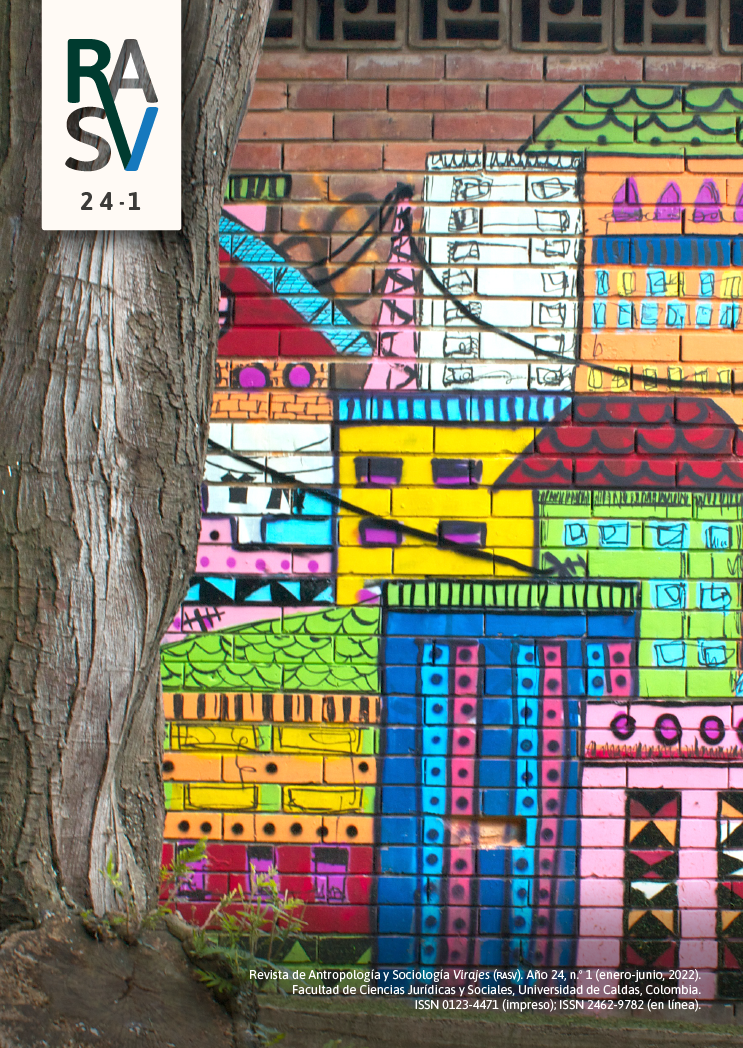Authors
Abstract
La violencia tiene una larga historia en nuestra especie, ha impactado las experiencias de vida de todos los seres humanos desde el paleolítico —o incluso antes— hasta nuestra época; es, ha sido y seguirá siendo parte de la existencia humana (Keeley, 1996, 2014; Guilaine y Zammit, 2005; Gat, 2006; Tooby y Cosmides, 1988). Este fenómeno multidimensional, históricamente contingente y especifico en el tiempo y en el espacio, adquiere su significado en el contexto cultural e histórico en donde se circunscribe. Por consiguiente, no todos los actos de violencia son expresados, comprendidos, ni xperimentados de manera idéntica por todos los individuos de la misma población o de diferentes poblaciones; lo que para unos es un comportamiento violento para otros no lo es, así como, lo que hoy consideramos violencia es probable que en el pasado no haya sido castigado o definido de esa manera (Koziol, 2017; Scheper-Hughes y Bourgois, 2004; Ralph 2013).
References
Bright, L. N. (2020). Structural Violence: Epistemological Considerations for Bioarchaeology. En Colleen, M. C., Julia, R. P. y Hubbe, M. (eds.), Theoretical Approaches in Bioarchaeology (pp. 131-149). Routledge. Taylor & Francis Group.
Elbert, T. y Schauer, M. (2014). Epigenetic, Neural and Cognitive Memories of Traumatic Stress and Violence. En S. Copper y K. Ratele (eds.), Psychology Serving Humanity: Proceedings of the 30th International Congress of Psychology, Volume 2: Western Psychology (pp. 215-127). Psychology Press.
Farmer, P. (2004). An Anthropology of Structural Violence. Current Anthropology, 45(3), 305-325. https://doi.org/10.1086/382250
Ferguson, R. B. (2008). Ten Points on War. Social Analysis, 52(2), 32-49. https://doi.org/10.3167/SA.2008.520203
Galtung, J. (1969). Violence, Peace, and Peace Research. Journal of Peace Research, 6(3), 167-91. https://www.jstor.org/stable/422690
Gat, A. (2006). War in Human Civilization. Oxford University Press.
Guilaine, J. y Zammit, J. (2005). The Origins of War: Violence in Prehistory. Blackwell Publishing Ltd.
Harrod, R. y Martin, D. (2015). Bioarchaeological Cases Studies of Slavery, Captivity and Other Forms of Exploitation. En Wilson, L. (ed), The Archeology of Slavery. A Comparative Approach to Captivity and Coercion (pp. 41-63). Southern Illinois University.
Keeley, L. (1996). War before Civilization. The Myth of the Peaceful Savage. Oxford University Press.
Keeley, L. (2014). War Before Civilization-15 Years On. En T. K. Shackelford y R. D. Hansen (eds.), The Evolution of Violence (pp. 23-31). Springer New York.
Klaus, H. D. (2012). The Bioarchaeology of Structural Violence: A Theoretical Model and a Case Study. En D. L. Martin, R. P. Harrod y V. R. Perez (eds.), The Bioarchaeology of Violence (pp. 29-62). University Press of Florida.
Klaus, H. D. y Tam, M. (2009). Contact in the Andes: Bioarchaeology of Systemic Stress in Colonial Mórrope, Peru. American Journal of Physical Anthropology, 138(3), 356–68. https://doi.org/10.1002/ajpa.20944
Koziol, K. M. (2017). Shattered Mirrors: Gender, Age, and Westernized Interpretations of War (and Violence) in the Past. En D. L. Martin y C. Tegtmeyer (eds.). Bioarchaeology of Women and Children in Times of War: Case Studies from the Americas (pp. 15-26). Springer International Publishing.
Mant, M. L. y Holland, A. J. (2019). Bioarchaeology of Marginalized People. Academic Press.
Martin, D. L., Harrod, R. y Pérez, V. (Eds.). (2012). The Bioarchaeology of Violence. University Press of Florida.
Nystrom, K. C. (2014). The Bioarchaeology of Structural Violence and Dissection in the 19th-Century United States. American Anthropologist, 116(4), 765–79. https://doi.org/10.1111/aman.12151
Pérez, V. R. (2012). The Politicization of the Dead: Violence as Performance, Politics as Usual. En D. L. Martin, R. P. Harrod, y V. R. Perez (eds.), The Bioarchaeology of Violence (pp. 13-29). University Press of Florida.
Ralph, S. (2013). The Archaeology of Violence: Interdisciplinary Approaches. State University of New York Press.
Redfern, R. (2017). Injury and Trauma in Bioarchaeology: Interpreting Violence in Past Lives. Cambridge University Press.
Scheper-Hughes, N. y Bourgois, P. (2004). Violence in War and Peace. An Anthology. Blackwell Publishing Ltd.
Sofaer, J. R. (2006). The Body as Material Culture: A Theoretical Osteoarchaeology. Cambridge University Press.
Tooby, J. y Cosmides, L. (1988). The Evolution of War and Its Cognitive Foundations. Institute for Evolutionary Studies Technical Report, 88(1), 1–15. https://www.cep.ucsb.edu/papers/EvolutionofWar.pdf
Tremblay, L. A., Reedy, S. C. (2020). The Bioarchaeology of Structural Violence. A Theoretical Framework for Industrial Era Inequality. Springer International Publishing. Whitehead, N. L. (2004). Violence. School of American Research.

 PDF (Español)
PDF (Español)
 FLIP
FLIP



















